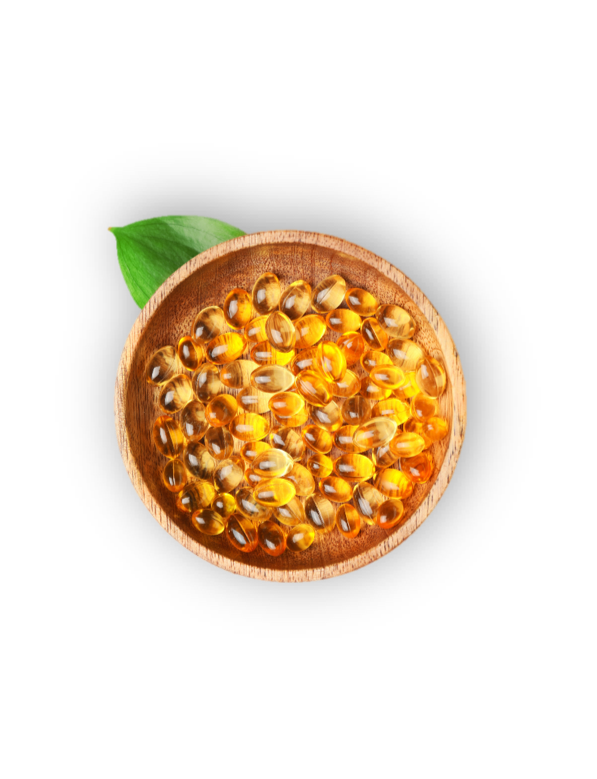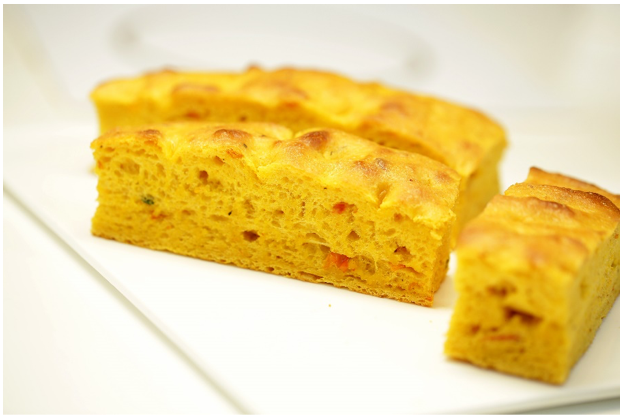
Malaysian Red Palm Oil:
The Bona Fide Superfood
 Hailed as a superfood on a popular American television programme in 2013, red palm oil (RPO) gained its much-needed stardom. In truth, the orange-red hue edible oil has been around for centuries, culinarily used by ancient Egyptians.
Hailed as a superfood on a popular American television programme in 2013, red palm oil (RPO) gained its much-needed stardom. In truth, the orange-red hue edible oil has been around for centuries, culinarily used by ancient Egyptians.
In Malaysia, while great attention has been given to palm oil over the years, many have overlooked or have not been aware of the presence of red palm oil, the carotene-rich version of our regular golden palm oil.
Provitamin A
Red palm oil is the product of minimally processed oil palm fruits. The oil is extracted specifically from the flesh (just like palm oil), but with a different technology that maintains the abundant presence of provitamin A carotenoids (the yellow, orange, and red pigments in fruits and vegetables).
The term provitamin means that it is a vitamin precursor. Once ingested, the human body will then convert it to vitamin A. In the market, RPO is the only commercially available edible oil, rich in provitamin A carotenoids. Interestingly, RPO contains mainly beta-carotene (apart from alpha-carotene), which yields the most vitamin A out of all the provitamin A carotenoids.
Carotene particularly strengthens the body’s immune system, helps boost heart health and may help reduce the risk of cancer. For children, it supports better eye health, growth, and development. Many studies have found that RPO is effective in preventing or alleviating vitamin A deficiency, with some extent of having the same effects as vitamin A supplements.
Vitamin E Tocotrienols
Apart from the provitamin A, RPO contains both members of the vitamin E family, tocotrienols and tocopherols. Vitamin E is a well-known essential antioxidant, protecting human cells from the damaging free-radicals.
As antioxidants, tocotrienols are 40-60 times more potent than tocopherols. You can reach for RPO as one of the best sources for tocotrienols as not all cooking oils can offer this.
Free radicals are either produced by the human body or from external sources such as exposure to pollution, radiation, and medication. If they cannot be gradually destroyed, their accumulation will create a phenomenon called oxidative stress that plays a major role in chronic and degenerative illnesses including cancer, aging, cardiovascular and neurodegenerative diseases.
Research in vitamin E tocotrienols has shown that it is beneficial in protecting against stroke and cardiovascular disease, supporting liver health, and exhibiting potential anti-cancer properties. Nevertheless, it requires supplementary intake to existing diet. Vitamin E tocotrienols, in capsule form, extracted from palm oil, are available through online purchase and in pharmacies.

Culinary Use of Malaysian Red Palm Oil
For chefs, using premium ingredients is a bonus when trying to serve delicious food with healthy ingredients. RPO superfood status is attributed to its high level of natural antioxidants, low emission of acrolein (toxic volatile compounds) during cooking, and giving high ‘functional’ quality (high contents of carotenoids and vitamin E) to food. All these highlights the potentials of RPO for our kitchens.
Options are aplenty when using Malaysian red palm oil. It can be used as a healthy ingredient, nutritious additive, and natural colourant to a wide array of dishes, from appetisers and snacks, to main meals and desserts.
Compare the smoke points
| Cooking Oil | Smoke Point |
| Palm Oil | 235°C |
| Extra Virgin Olive Oil |
160°C |
| Red Palm Oil | 150°C |
Malaysian red palm oil can be used as a healthy ingredient, nutritious additive, and natural colourant
RPO can be used for stir-frying and even in baking and roasting. But to avoid loss of nutrients, it is best incorporated in sauces, dressings, and gravies with minimal heating.
Healthy and Nutritious
Dressings are the most popular way of using RPO, whereby the regular oil can be replaced with this nutrient-rich alternative. Mayonnaise of course, is a must-try. Honey-mustard dressing can also be prepared with RPO for an interesting variation.
In main courses, RPO can be used in pasta or rice dishes. For Spaghetti Aglio Olio, just heat up RPO before adding garlic, chili flakes, and salt. Try also giving a new twist to your fried rice with RPO, or drizzle some in gravy prior to turning off the burner.
Another creative take would be the RPO ice cream. Some RPO, milk, sugar, thickened cream, and yoghurt sets a very creamy texture using the gelato or ice cream machine. Mango or any type of firm and juicy fruit can be added for this recipe.
Cakes, muffins, and brownies would benefit just as much in terms of moist texture and nutrient value, when being added with RPO.
Natural Colourant
In food manufacturing, RPO is being used as a natural food colourant, adding nutritional value, and improving the shelf life of products. Vibrancy in food does wonder in tantalizing the taste buds as colour does play an important role in the acceptance of food.
In cooking, chefs have been using RPO to give a richer hue to their food ranging from biryani to scrambled eggs. Baked products such as golden fluffy Focaccia is also achieved with RPO being added to flour, yeast and water. Obviously spicy sambal (chilli gravy) or asam pedas dishes are visually more attractive with a more intense red.
Kitchen Must-Have
Malaysian red palm oil, proven healthful through academic research and widely applicable in various recipes, should now be an essential ingredient in any kitchen. For RPO recipes, please visit the RECIPE section of palmoiltv.org.
SUZANNA MOHAMED DAHAN
References
Andreu-Sevilla, A. J., Hartmann, A., Burló, F., & Poquet, N. (2009). Health Benefits of Using Red Palm Oil in Deep-frying Potatoes: Low Acrolein Emissions and High Intake of Carotenoids. Food Science and Technology International, 15-22.
Dong, S., Xia, H., Wang, F., & Sun, G. (2017). The Effect of Red Palm Oil on Vitamin A Deficiency: A Meta-Analysis of Randomized Controlled Trials. Nutrients, 1281.
Imram, N. (1999). The role of visual cues in consumer perception and acceptance of a food product. Nutrition & Food Science, 224-228.
Insel, P., Ross, D., McMahon, K., & Bernstein, M. (2011). Nutrition. Massachusetts: Jones and Bartlett Publishers.
Pham-Huy, L., He, H., & Pham-Huy, C. (2008). Free Radicals, Antioxidants in Disease and Health. Internatonal Journal of Biomedical Science, 89-86.
Serbinova, E., Kagan, V., Han, D., & Packer, L. (1991). Free radical recycling and intramembrane mobility in the antioxidant properties of alpha-tocopherol and alpha-tocotrienol. Free Radical Biology and Medicine, 263-275.



